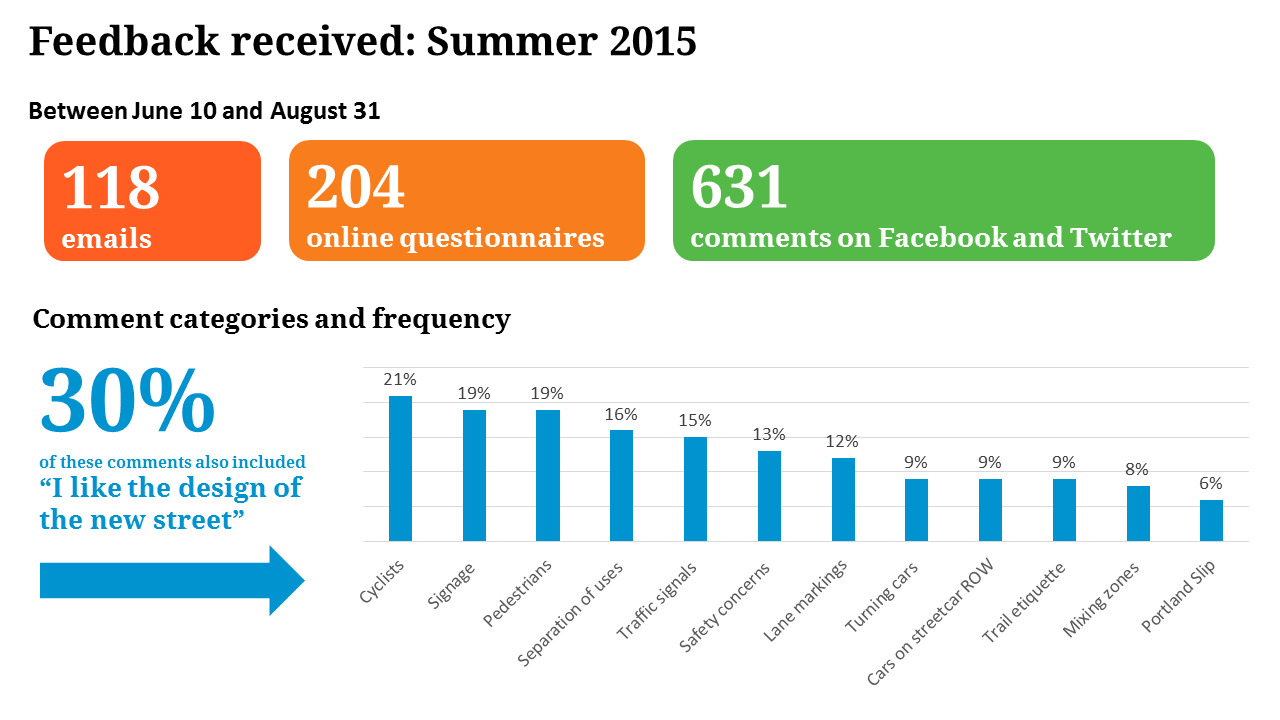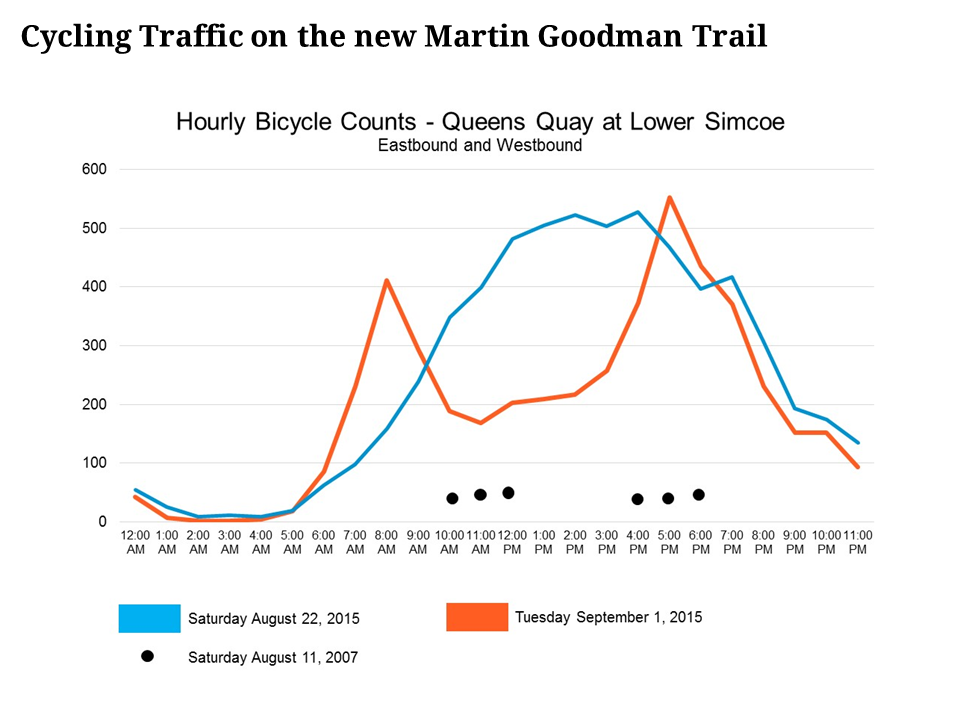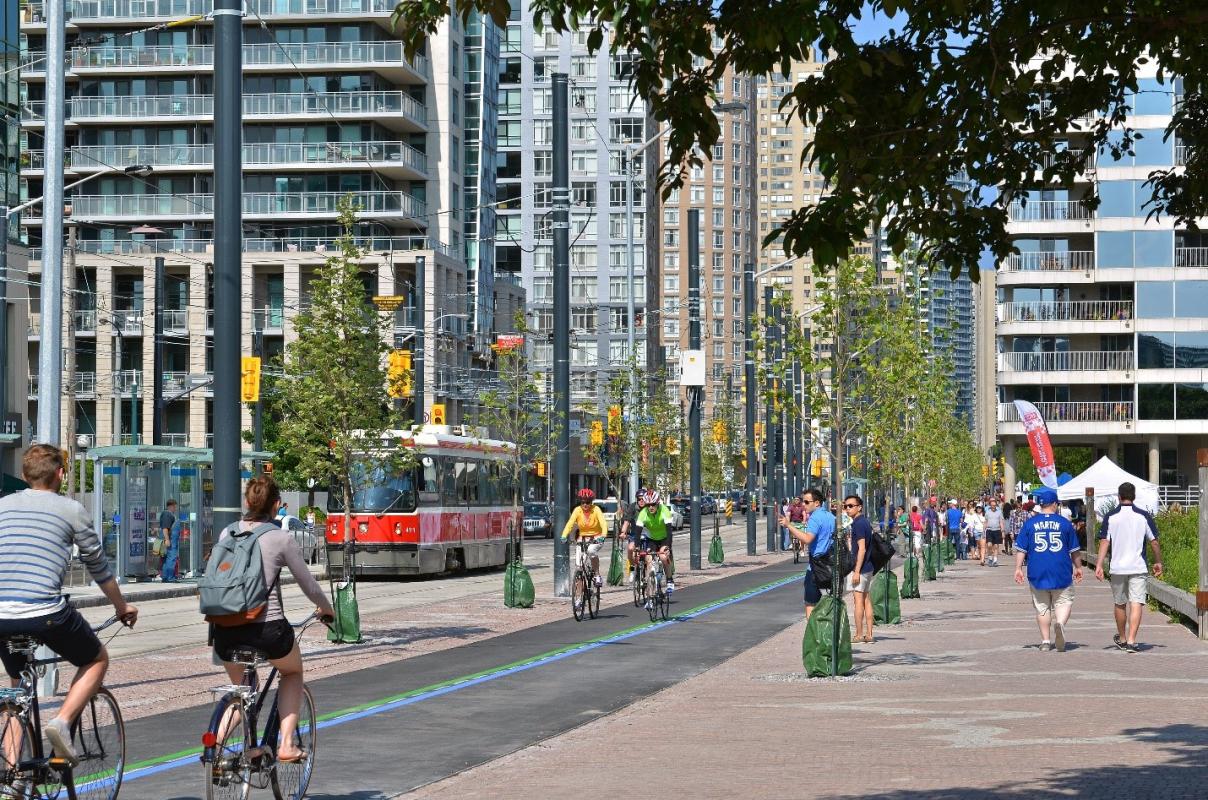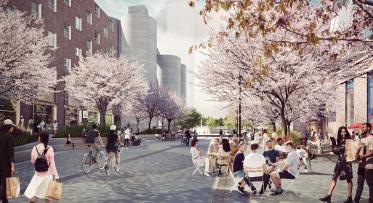Public Report on the Queens Quay Revitalization
On October 14, we held a community meeting to provide an update on the new Queens Quay.
POSTED: OCTOBER 21, 2015
BY: MIRA SHENKER
Since the new Queens Quay opened this June, we have been observing the street and making some changes to make it even better for cyclists, pedestrians, drivers and transit users. We have now updated the community with a public report on the Queens Quay Revitalization project. This public report includes an overview of the project’s history and the design and approvals process, as well as our rationale for revitalizing the street. It contains a summary of all the public feedback we received between June 10, 2015 and August 31, 2015 and our own observations during that same time period. It also includes an overview of the changes we have made on Queens Quay in consultation with the City of Toronto, TTC and Toronto Police Services.
On October 14, we hosted a community update meeting to present an overview of this public report. The meeting was attended by 150 people.
Read the full report here [PDF].

This report provides a breakdown of the themes and categories of public feedback received about Queens Quay in summer 2015.
Because this is a new kind of street for Toronto, we received a substantial amount of public feedback, especially in the weeks immediately following our official opening. From June 10 – August 31, we received almost 1,000 comments through email, social media and an online form we created to help track comments. Often, constructive feedback was paired with positive comments about the street’s new design – the most common piece of feedback we received is that people like the new design. The second-most common topic was cyclist behaviour. The report looks at the topics most frequently mentioned in the public feedback we received. Our October 14 presentation addressed some of the less commonly mentioned issues not represented in the report. For instance, some local residents have expressed concern about illegal use of the new laybys along the north side of Queens Quay.
Observing the street
As always, we value public feedback and thoughtfully considered all comments we received. It was also important for our project team to observe the street’s operation. Waterfront Toronto staff have spent a substantial amount of time this summer walking the new street and talking to people using the street. We also spent a total of 26 hours observing and systematically recording patterns of cyclist, pedestrian and driver behaviours between Bay Street and Yo Yo Ma Lane. We audited eight intersections in 20-minute intervals spread over different times of day and days of the week. The results of this audit are published in the report. They are not the ultimate representation of how Queens Quay is functioning – they show the types of behaviours that are typical on many downtown streets.
Changes
Based on feedback as well as our own observations, we saw that some minor adjustments would help reinforce existing visual cues for drivers, cyclists and pedestrians using the new street. Proposed changes were reviewed by an interdisciplinary working group with members from the TTC, City of Toronto, Toronto Police Service and Waterfront Toronto staff. Those changes were outlined in our October 14 presentation, as well as a list of changes that are currently pending or under review by the City. This information also appears in the report.
Impacts of revitalization

Cyclists are using the new Martin Goodman Trail in record numbers. This is now the most traveled cycling route in Toronto.
Feedback from members of the community, including local businesses, indicates that the new design is doing just what we had hoped: welcoming locals and tourists to a more comfortable, more attractive and more functional waterfront main street. In just one summer, pedestrians have come down to fill the widened promenade and cyclists have taken to the new Martin Goodman Trail in even higher numbers than expected. According to the City of Toronto, Queens Quay has gone from one of the least-used to the most-used cycling route in the city.
Waterfront businesses have also reported a very healthy summer and fall and increases in pedestrian traffic.
We continue to observe the new street and welcome feedback about this new public space.



